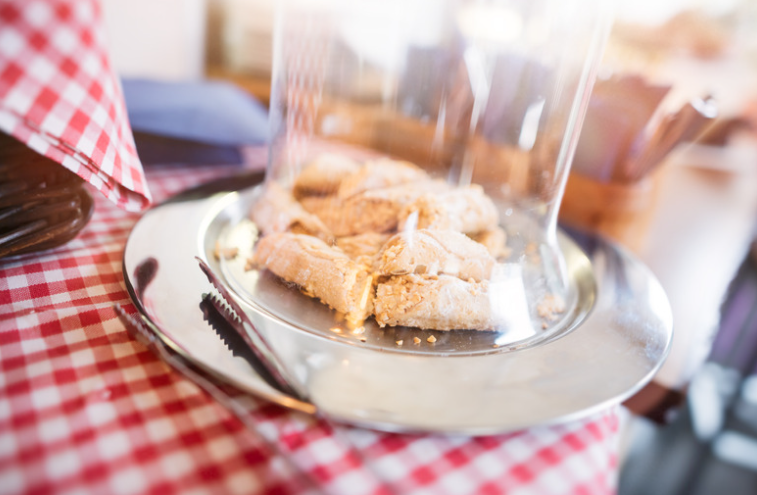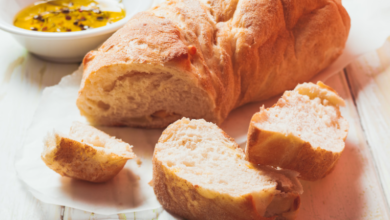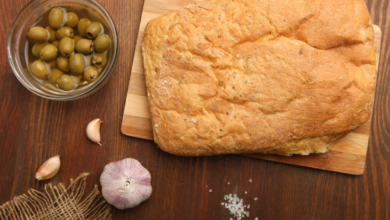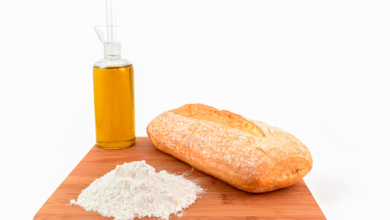Is leaving Ciabatta Dough Overnight a Good Idea?

What To Know
- Leaving the dough at room temperature overnight will result in over-fermentation, leading to a sour taste and a dense crumb.
- When ready to bake, remove the dough from the refrigerator and let it come to room temperature for about an hour.
- With patience, practice, and a little culinary curiosity, you can master the art of ciabatta dough and enjoy the rewards of this beloved Italian bread.
Ciabatta, the beloved Italian bread known for its airy crumb and crispy crust, is a culinary masterpiece. However, many bakers encounter a common dilemma: can you leave ciabatta dough overnight? This blog post delves into the science and practicalities of this question, providing you with the knowledge to make informed decisions about your ciabatta dough.
The Science of Ciabatta Dough
Ciabatta dough is a high-hydration dough, meaning it contains a high percentage of water relative to flour. This water content creates a loose, slack dough that is difficult to handle. However, it is this high hydration that gives ciabatta its signature crumb.
When yeast is added to the dough, it begins to ferment, producing carbon dioxide gas. This gas creates bubbles in the dough, which expand and give the bread its airy texture. The fermentation process is influenced by several factors, including temperature, time, and the type of yeast used.
Can You Leave Ciabatta Dough Overnight?
The answer to whether you can leave ciabatta dough overnight depends on several factors:
- Temperature: Ciabatta dough should be fermented at a cool temperature, around 60-65°F (15-18°C). This slow fermentation allows the dough to develop its full flavor and crumb structure. Leaving the dough at room temperature overnight will result in over-fermentation, leading to a sour taste and a dense crumb.
- Time: The recommended fermentation time for ciabatta dough is 12-18 hours. This time allows the yeast to fully ferment the dough, developing the desired crumb and flavor. Leaving the dough overnight for longer than 18 hours can lead to over-fermentation.
- Yeast: The type of yeast used can also affect the fermentation time. Instant yeast ferments more quickly than active dry yeast, so if using instant yeast, you may need to reduce the fermentation time.
Benefits of Overnight Fermentation
While leaving ciabatta dough overnight is not a necessity, it does offer several benefits:
- Improved flavor: Overnight fermentation allows the dough to develop a more complex and flavorful taste.
- Better crumb structure: The slow fermentation process helps to create a more open and airy crumb.
- Easier to handle: After overnight fermentation, the dough becomes more extensible and easier to shape.
How to Leave Ciabatta Dough Overnight
If you choose to leave your ciabatta dough overnight, follow these steps:
1. After mixing the dough, place it in a lightly oiled bowl and cover it with plastic wrap.
2. Refrigerate the dough for 12-18 hours.
3. When ready to bake, remove the dough from the refrigerator and let it come to room temperature for about an hour.
4. Shape the dough and bake according to the recipe.
Troubleshooting Overnight Fermentation
If you experience any problems with overnight fermentation, try the following troubleshooting tips:
- Dough is too sour: The dough may have over-fermented. Reduce the fermentation time or use less yeast.
- Dough is too dense: The dough may have been under-fermented. Increase the fermentation time or use more yeast.
- Dough is too sticky: The dough may be too wet. Add more flour until the dough is no longer sticky.
Other Overnight Fermentation Options
In addition to refrigerating ciabatta dough overnight, you can also use other methods for overnight fermentation:
- Cold fermentation: Place the dough in a covered container and refrigerate it for up to 3 days. This method produces a very flavorful bread with a dense crumb.
- Room temperature fermentation: Cover the dough with plastic wrap and leave it at room temperature overnight. This method is not as ideal as refrigeration because the dough may over-ferment.
Final Note: Mastering the Art of Ciabatta Dough
Whether you choose to leave your ciabatta dough overnight or not, understanding the science and techniques involved will help you create delicious and authentic ciabatta bread. With patience, practice, and a little culinary curiosity, you can master the art of ciabatta dough and enjoy the rewards of this beloved Italian bread.
What People Want to Know
Q: How long can I leave ciabatta dough overnight?
A: You can leave ciabatta dough overnight for up to 18 hours in the refrigerator.
Q: What is the ideal temperature for overnight fermentation?
A: The ideal temperature for overnight fermentation is around 60-65°F (15-18°C).
Q: Can I use instant yeast for overnight fermentation?
A: Yes, you can use instant yeast for overnight fermentation, but you may need to reduce the fermentation time.





